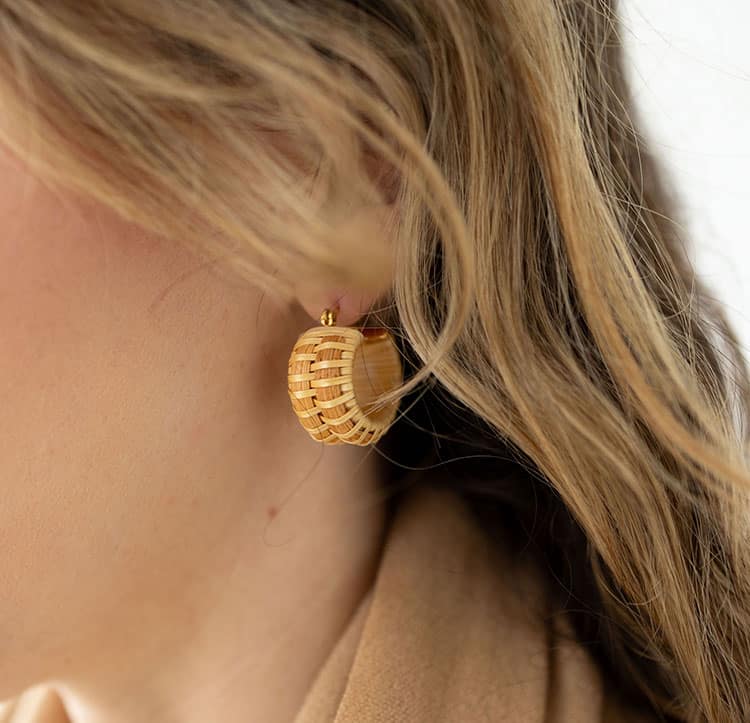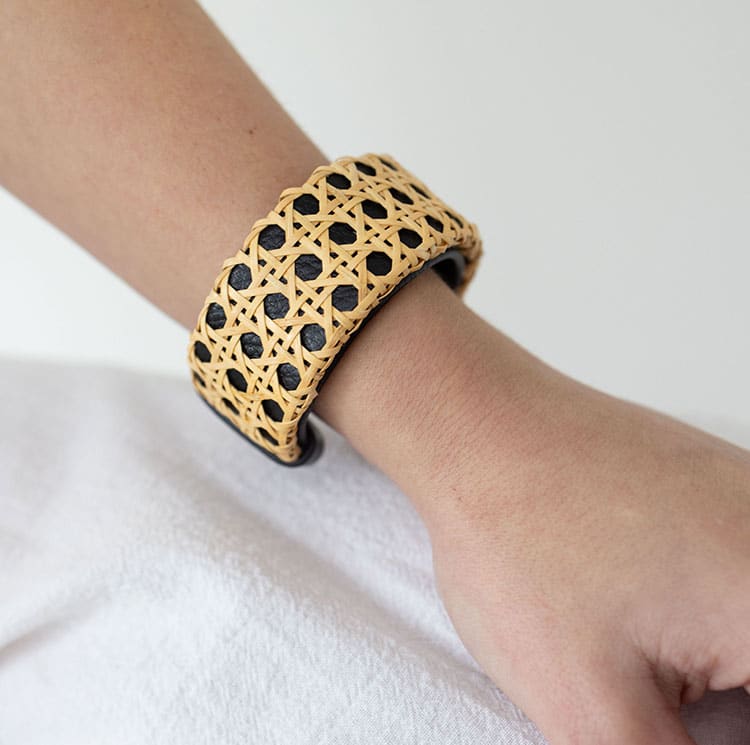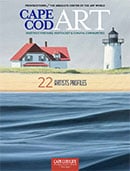
Whale Tail Weaving: Threads of Tradition and the Joy of the Unexpected
Cape Cod Art / ART Annual 2025 / Art & Entertainment, People & Businesses
Writer: Julie Craven Wagner
Whale Tail Weaving: Threads of Tradition and the Joy of the Unexpected

Cape Cod Art / ART Annual 2025 / Art & Entertainment, People & Businesses
Writer: Julie Craven Wagner
Bridget Wiatrowski, the artisan behind Whale Tail Weaving, isn’t just preserving the storied tradition of Nantucket basketry—she’s reshaping it with charm, elegance, and a spark of modern whimsy.
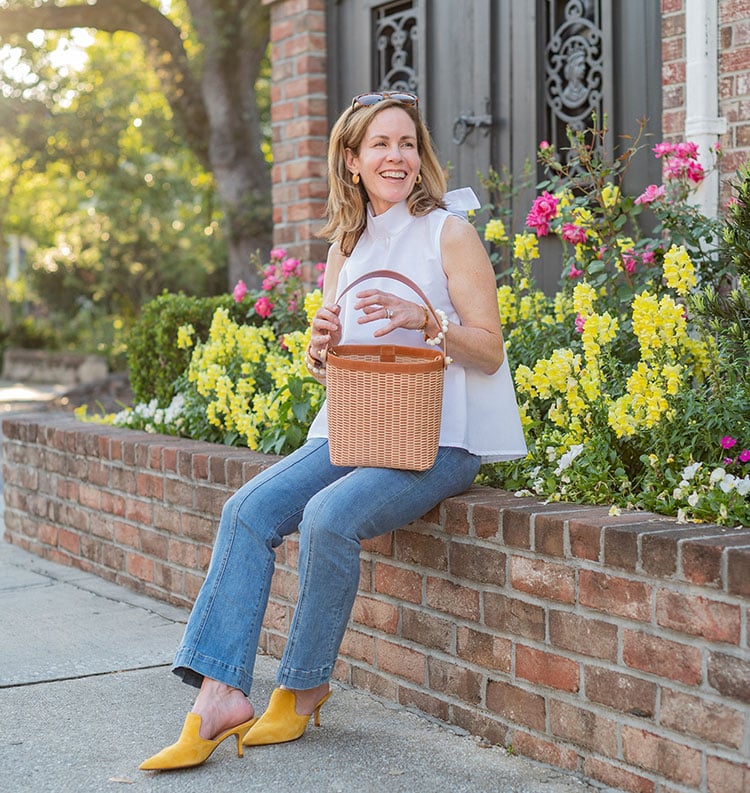
This story starts in Yarmouthport, on Cape Cod’s north side, where the scent of salt hung in the air and creativity filled Bridget Wiatrowski’s (nee Creney) home. Her mother, one of the many Cape women who embraced Nantucket basket weaving during the 1980s, would head out with friends to attend classes and return with intricate, handwoven pieces. “We didn’t call it art,” Bridget laughs. “But it was such a part of the rhythm of life. Baskets were always around—even if not made by my hands yet, they were definitely woven into our lifestyle.”
Bridget herself came to weaving in adulthood, though the seeds of creativity were sown early. As a child, she crafted jewelry from sculpey clay, selling beaded creations at concerts to fund her tickets. She was a puzzle kid—drawn to detail, precision, and patience, all of which would one day become essential to her craft. “I always had ideas,” she says. “Little things, different things—I just liked to make.”
Her love for the intricate structure of basketry eventually pulled her in. “I think there’s a perception that you can weave a basket while doing a million other things,” she says. “But I can’t. When I weave, I’m all in—it’s total focus, total mindfulness.”
That mindfulness and attention to detail are only one part of what set Whale Tail Weaving apart, the other is her unique interpretation of what and how this traditional craft can be for a 21st century woman. While steeped in the centuries-old tradition of Nantucket basketry, Bridget’s work veers joyfully into the unexpected. Her pieces—bangles, cuffs, keychains, charm necklaces, and handbags—honor heritage but also surprise with fresh textures and clever design. A leather-wrapped bracelet hides the seam where the staves meet—practical, yes, but also beautiful. “I wanted to up-level the feel,” she says. “To give it a richness, a little edge. And I’ve always existed on the edge—not in a risky way, but in the gray zones, where creativity lives.”
That instinct for reinvention was evident from the very first piece she made: a single-stave bracelet she now calls the Whaler’s Daughter Cuff. “It’s a great piece to learn on,” she explains. “Accessible, teachable—and sweet.” From there, her collection has grown organically, informed by the same kind of thoughtful, expressive functionality that defined her mother’s style. “She was always so put together,” Bridget remembers. “She worked from home as a fashion consultant, and every season, our living room turned into a boutique. That sense of fashion, of presentation—it stuck with me.”
It shows. Whale Tail Weaving is as much about experience as it is about product. Bridget’s pieces arrive beautifully packaged—each one presented with care, like a cherished keepsake. “I think of them like my children,” she admits. “When I send them into the world, I want them to arrive safely, with a little joy tucked inside.” Her customers agree: the signature boxes often remain on dressers, part of the display as much as the piece itself.
Her handbags—designed with options like removable straps for clutch or shoulder wear—embody her philosophy of creative flexibility. To that point, she encourages her clients to explore how her pieces incorporate into their existing collection of jewelry. “I want people to mix them into their own style,” she says. “Pull things from your jewelry box that have been sitting for years—wear them with something new. Make it yours.”
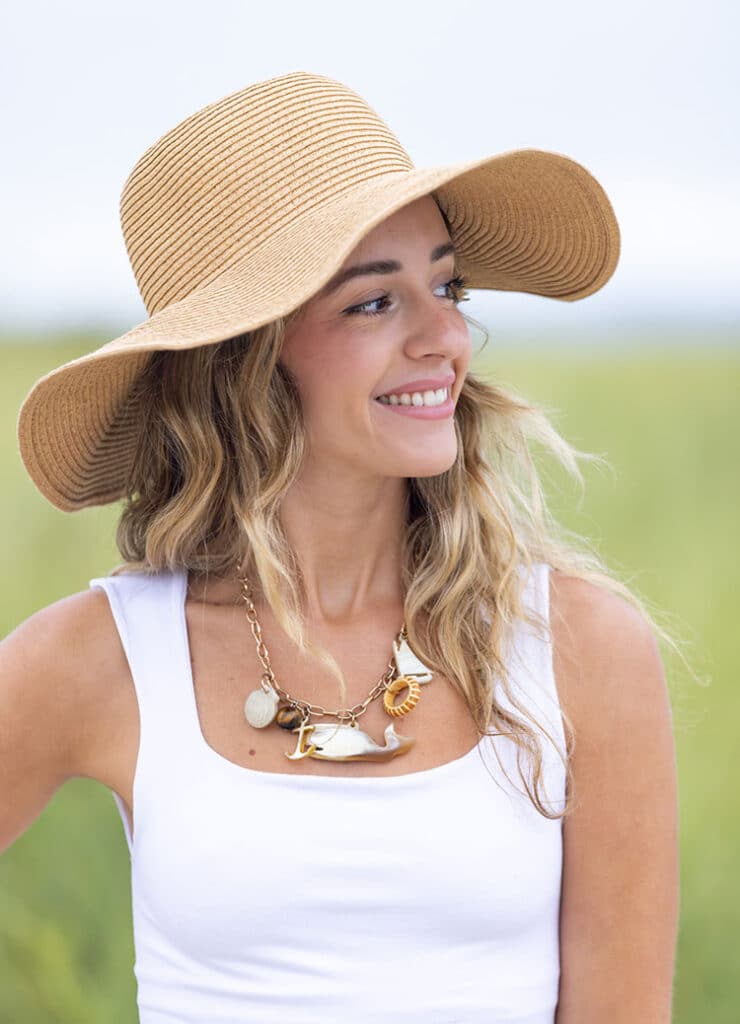
This sense of inviting possibility runs through everything she does. Her recent addition of charm necklaces—featuring hand-carved water buffalo horn medallions—has been a hit. “They’re oversized and playful,” she says. “And they can go on bracelets too.” Each new offering feels considered, not just as an object, but as part of a lifestyle.
While Bridget officially launched Whale Tail Weaving in 2017, her commitment to a “slow and steady” growth strategy reflects a business built with care. “I remember reading that men tend to build businesses on a steep, immediate curve—women often grow slower, over seven to ten years, with a hockey stick at the end,” she says. “I’m hoping I’m nearing my hockey stick moment.”
That trajectory suits her just fine. After a high-intensity career in management consulting, Bridget welcomed a new chapter—one that balanced creativity with family life. She and her husband, Mark, live part-time in Hyannis and have six children in a beautifully blended family. “I joke that maybe I kept weaving more and more because I needed sanity,” she laughs. “But really, this work is a gift. It’s joyful, and it’s mine.”
The preservation of basketry is central to her mission. While the roots of Nantucket baskets are often romanticized—the idea that they were made aboard whaling ships is, she notes, more myth than fact—their true origin speaks volumes about the creativity and adaptability of early American artisans. “They were first made on land, then materials were taken to lightships—the first being off the South Shoal of Nantucket—and that’s how they became known as the Lightship Basket,” she says. “The baskets were very functional, and later, became fashionable. too.”
And that’s exactly where she sees them going again. “Baskets were once a viable way to make a living year-round. That’s harder now,” she says. “But I believe there’s a place for them in contemporary style. They’re not just relics—they’re relevant.”
There’s also a sustainability story here, even if Bridget hesitates to frame it that way. “We’re not working with synthetics,” she explains. “These are natural materials—rattan, horn, leather—and they’re durable. We still have baskets from hundreds of years ago. Why shouldn’t the pieces I’m making last for generations, too?”
Whale Tail Weaving isn’t just a business, instead Bridget is weaving a legacy with her hands. It’s a story of artistic evolution, family heritage, and the power of handmade beauty to anchor us in tradition while opening doors to self-expression. It’s not about perfection—it’s about personality. As Bridget puts it, “I want people to feel that subliminal spark—that excitement when something just speaks to you, even if you’re not sure where it fits yet. That’s when it becomes part of your story.”
And like every great story, Whale Tail Weaving starts with a single thread—and an artisan bold enough to follow where it leads.
You can see an intriguing selection of Whale Tail Weaving at Alex & Co., 857 Main Street in Osterville where they will host a trunk show on 7/2/25.
Julie Craven Wagner is the editor of Cape Cod ART.

